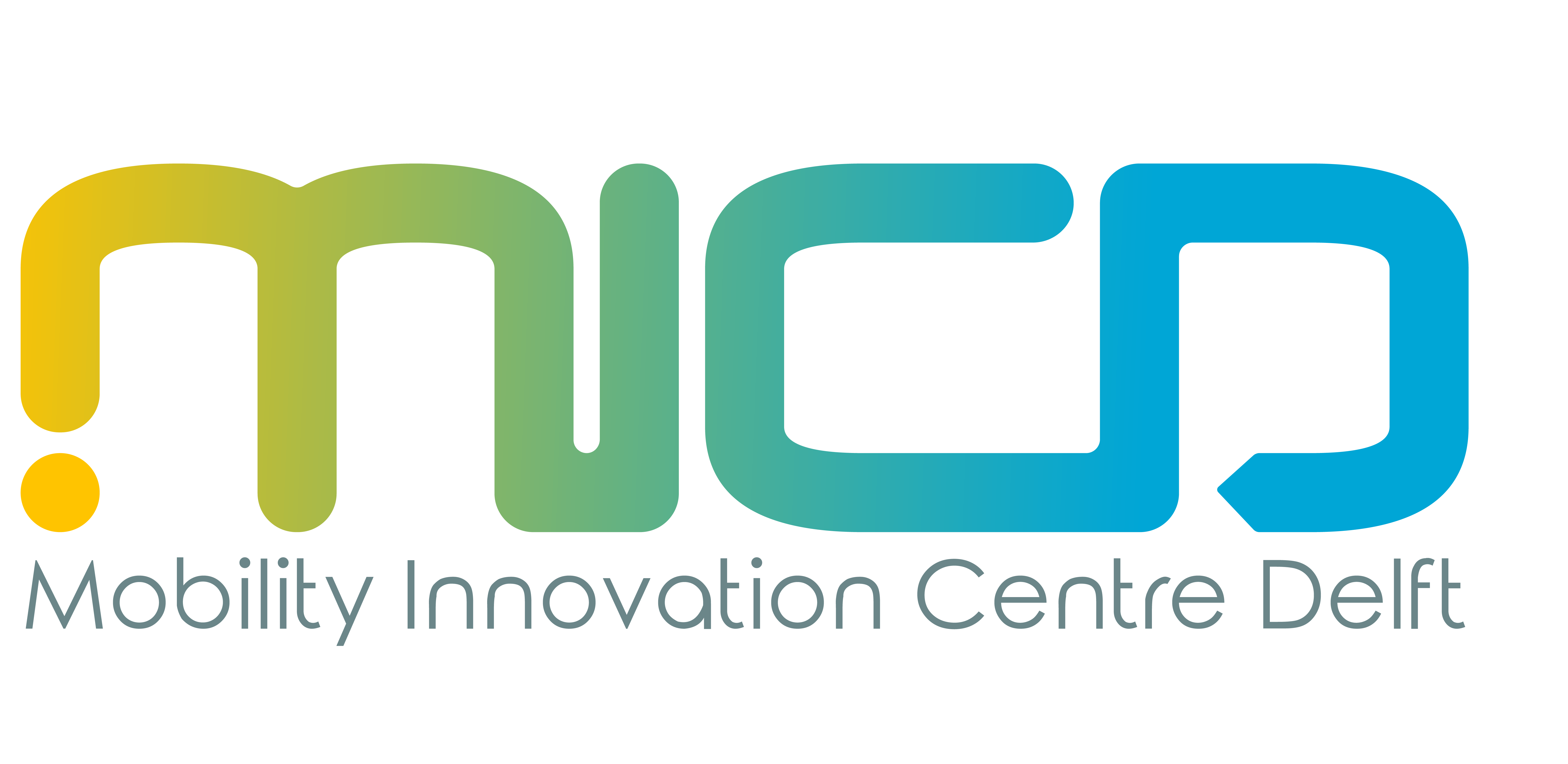With the new TU Delft Outdoor Mobility Digital twin (OMDt) we are able to monitor and visualize all traffic on our campus, including pedestrians and cyclists. This helps us to take measures that not only benefit road safety, but also reduce crowding. MICD brought together nine partners, TU Delft labs and external partners, to work on this innovative solution.
Duration
From July 2020 (No end date set)Partners (TU Delft)
Urban Mobility Observatory (UMO), Active Mode Lab (AM lab), AI-lab, DITTlabPartners (other)
DoubleSense, Connection Systems, Xovis, Optima Networks, Argeleo
To monitor all traffic on the TU Delft Campus we installed a special sensor network. Our sensors collect visual data and instantly convert these data into privacy-proof traffic information, showing pedestrians and cyclists as moving dots. This information is combined with publicly available data such as the opening times of bridges and real-time locations of trains, buses and trams.
The combined information is visualised in the Outdoor Mobility Digital twin, OMDt. This 3D model covers the city Delft with more detailed information about the TU Delft Campus. In this model heat maps (colour coding) indicate how busy it is at a certain location.
Predictions
The system is ultimately intended to make predictions about movements and crowding on campus, both short-term (15 minutes ahead) and long-term (days, weeks and months). There are already methods that successfully predict traffic flows for car traffic, using artificial intelligence and machine learning. The researchers will now try out these methods on far more complex processes such as pedestrian and cyclist flows and flows within public transport.
Corona
The OMDt already proved its usefulness during the corona pandemic. It helped campus management to determine the feasibility of maintaining 1.5 metres of social distance, and it flagged up critical locations. These insights were used to initiate measures, ranging from advice to take different (less busy) routes, to travel at a different time or use an alternative mode of transport, to changing lecture timetables or implementing one-way traffic on cycle paths.
Mobility Lab
But a keen understanding of mobility is not only necessary during a pandemic. It is also important when it comes to calculating new spatial and mobility plans, for example. We therefore want the sensor network to grow into a fully-fledged Mobility Lab for scientific research. Currently, we are working on the development of new, cheaper sensor technology that provides reliable measurements.
A related issue is how we can combine different data sources to extrapolate more accurately information (data fusion). This is a difficult task, given the diversity of data from different sensors, but it can potentially lead to a higher quality of information and generate new information. For example, by combining data from public transport companies with information from the sensors, we could make more accurate estimates of the occupancy rate of buses calling at the campus.
